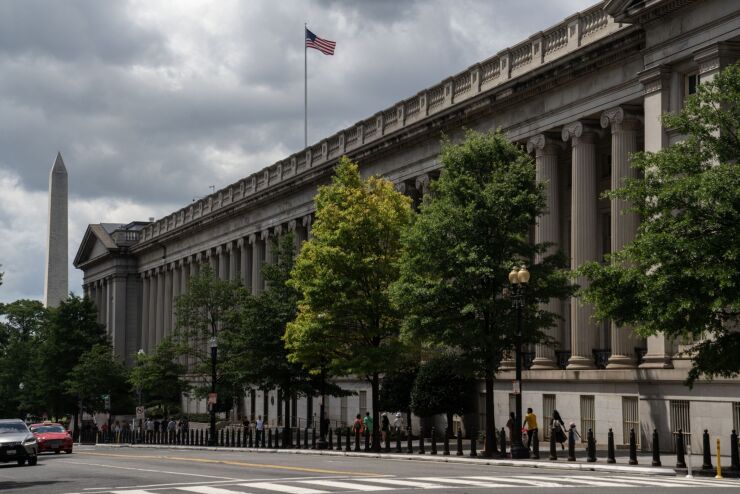(Bloomberg) --A key measure of how much bond investors are compensated for holding long-term debt turned positive for the first time since June 2021, underscoring the potential for interest rates to stay higher for longer.
The Federal Reserve Bank of New York's gauge of the 10-year term premium became positive on Monday, after having been negative for most of the past seven years, reflecting steep increases in longer-maturity Treasury yields. The index estimates the amount by which Treasury yields exceed the expected path of short-term rates.
The US yield curve is steepening on expectations that the Fed is nearly done raising rates, with the 10-year Treasury yield exceeding 4.5% for the first time since 2007. The trend has been aided by growth in the supply of US debt to finance wide government deficits.
The increase in the gauge reflects the possibility that interest rates will indeed stay higher for longer, along with concerns about the credibility of fiscal policy, according to analysts at HSBC Plc.
The "rising term premium reflects views that the longer-run equilibrium policy rate will be higher in the future," analysts led by Steven Major, global head of fixed-income research at the bank, wrote in a note Wednesday. "The rising risk premium in US Treasuries perhaps reflects tail-risk hedging against a situation" where more debt leads to higher yields, as has occurred in some emerging markets, they wrote.
The premium had reached a generational low of -1.67% in 2020 — partly due to declining inflation that made investors willing to accept lower long-term yields. For much of the period since 2016, it was also contained by Fed purchases of government bonds as a component of its monetary policy.
"In the US there is more risk of a higher term premium" based on fiscal policy, said Jean Boivin, a former Bank of Canada official who now heads the BlackRock Investment Institute. "The risk of holding long-dated bonds is higher."






